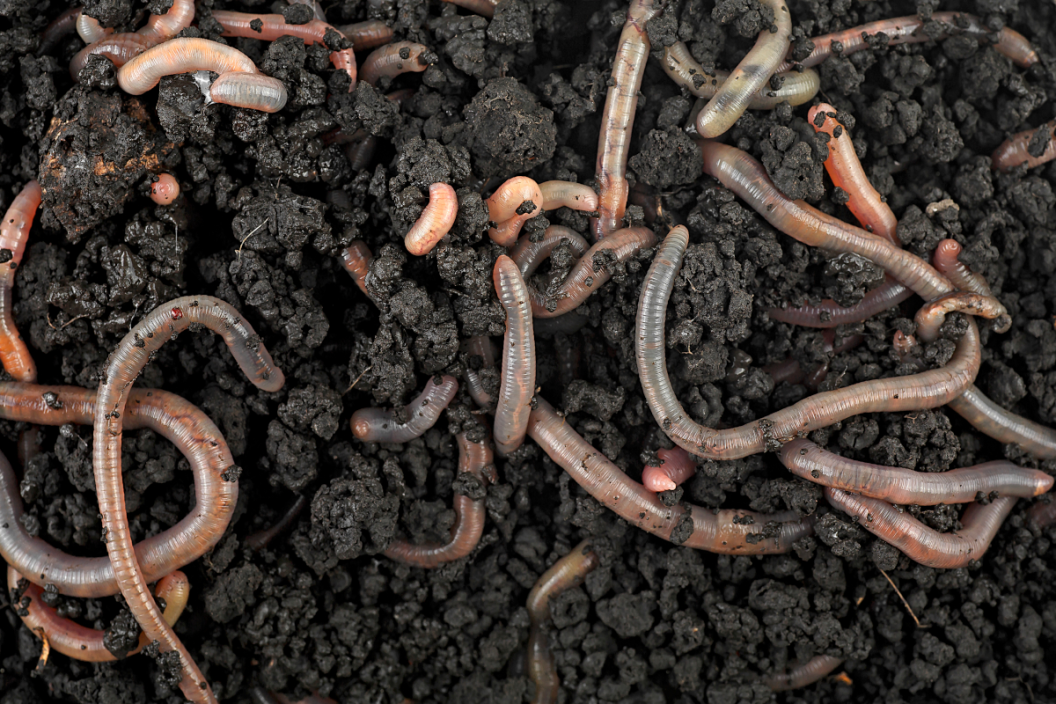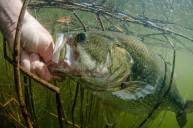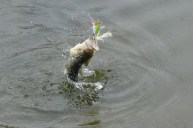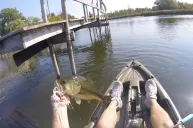Is the bite slow? Try night crawlers for fishing with these tips, and it'll pick up.
As most anglers already know, live bait is one of the easiest ways to catch fish. Minnows, red worms, meal worms, leeches and more can be effective when all else fails, no matter what time of year it is.
Of course, one of our old go-to baits is the classic nightcrawler. It really does not get much more traditional than using one of these large earthworms to catch fish.
What you may not have realized is there is more than one way to gather nightcrawlers. And more than one way to best fish them. Today we'll break down best uses of this classic fishing bait for the best odds of success.
Procuring nightcrawlers
Most people just make a visit to their local bait shop to pick up some Canadian or European nightcrawlers. It's the easiest way to get fishing worms and you can often pick them up on the way to the lake. However, sometimes there are shortages if a certain crop of worms has a bad spring.
Luckily, it's just as easy to catch your own. The simplest way to do it is to head out at night after a heavy rain and a flashlight, and just grab them. You can use a flashlight with a red lens or bulb to keep from spooking the worms back down their holes.
You can also try the "worm grunting" technique used in the video above. It takes some skill, but there are plenty of old-timers who swear by it.
It's also possible to farm live worms using a worm farm and worm bedding or a composting bin. We won't go into detail on that here, but just know it's an option to save money in the long run. Plus, they're great for a garden!
The classic method of fishing nightcrawlers
Of course, the easiest way to fish with nightcrawlers is to simply tie on the hook of your choice, a bobber and some split shot, and cast it into the water. It's not rocket science. And the great thing is this technique is tired and true. It works wonders on just about every species of panfish and sometimes even bass and catfish. It's a good way to introduce someone new to fishing because you're almost guaranteed to catch fish.
Our biggest fishing tip for this method is to cut the worms up and use smaller chunks if you're going after panfish. They're notorious bait thieves, and the smaller fish will empty your bait bucket in a hurry. But a smaller chunk of worm will still produce bites and will force the fish to take more of the bait (and the hook) in its mouth. Also, your bait will go further for a day of fishing by cutting them up.
If you're looking to catch bigger fish like largemouth bass, this isn't always the most effective method, so we'll look at some other techniques for fishing bigger worms for big fish.
Fishing them like a plastic worm
Bass fishermen have perfected many great worm fishing techniques with soft plastics, but hardly anyone thinks to try rigging live worms in a similar fashion. A worm that's rigged Texas or Carolina style can often produce great bass fishing results. In fact, switching over to nightcrawlers can be a great method when you're missing a lot of strikes on standard soft plastics. This could simply be because the flavor and texture of a live worm is unmistakable to a large fish. They're going to hold on a lot longer because they won't realize they've been fooled quite as quickly.
For a Texas rig, try a 3/0-5/0 size hook (depending on the size of the crawler) with a 1/8-2 ounce cone weight (depending on how deep you're fishing). For a Carolina rig, the same hook sizes apply, but use a weight up to a 1/2 ounce.
The bead you use for this rig is a matter of personal choice. Some anglers swear by glass beads for better sound, but plastic works too. It's probably less important here when you're using a live worm. Another method to try is "wacky" rigging the nighcrawlers, but it does come with some risk. Cast too hard, and your nightcrawler goes flying off the hook into the depths of the lake where it becomes a free meal.
I tend to use this the most on wary spawning bass. If you can see a fish on a bed but it's ignoring every lure you throw, it's time to switch it up. Fish that ignore plastic often find it harder to do so with the real thing. Sight fishing like this also helps better avoid the bait-stealing panfish that are out to ruin your fishing trip.
We mentioned that this is a great way to catch largemouths, but fishing live nightcrawlers like plastics can work great on smallmouth bass too.
Split shot rig
https://www.youtube.com/watch?v=tptsTbMJVTU
You can use this method for walleye, bass, crappie and many other species. Sometimes simple is best, and that pretty much sums up the split shot rig.
All you are doing is attaching a couple of split shot weights a foot or two from your hook.
This rig is a favorite of walleye anglers for shallow water conditions. Some anglers choose to jazz up this rig a little bit with a crawler plus either a handmade or store-bought harness rig with spinner blades.
Trolling nightcrawlers
This is a popular way to fish for both walleye and trout. Often, you're using nearly the same sort of crawler rigs as the split shot method.
For trolling nightcrawlers, you're going to be tying on a weight and then attaching a swivel of some kind. Behind that you'll attach a leader of monofilament where you'll tie your crawler rig. The type of weight and rig will vary widely depending on where you're fishing.
There are so many variations on crawler rigs, it's impossible for me to give any one recommendation. It's especially true when you start breaking down the different colors of blade rigs. In many cases, what works best is regional in nature. Because of that, before you start trolling, we suggest asking around to see what's working best on the water you're fishing. Otherwise, you'll probably spend a lot of time experimenting with rig setups and trolling speeds before you find what they're really biting on.
Catfish/carp rigs
Nightcrawlers can be an effective bait for both catfish and carp as well. The big thing is setting up your rig. Thankfully, it's pretty easy. You only need a few components.
A sliding weight rig is especially popular. It's sort of like a Carolina rig, except you're using heavier weights of up to three ounces with a leader of a foot or more. This type of fishing usually calls for larger hooks between 4/0-8/0 depending on how large the fish you're targeting are.
A variation off a standard sliding weight rig is to use a three-way swivel with something like a pencil weight to keep the nightcrawler further off the bottom. You can also bobber fish for catfish. I've used that method successfully in farm ponds before.
Most anglers like to use circle hooks when fishing worms for catfish, but I tend to prefer treble hooks, especially under a float or bobber. That is simply because I feel I can better thread a nightcrawler on a treble to prevent panfish from stealing it.
I also feel more confident in a fish staying on a treble than a circle hook during a fight, especially hard-fighting fish like catfish. But, again, this is another factor that comes down to personal preference.
A simple but effective way to fish
Nightcrawlers have been popular for fishing for probably hundreds of years and the reason is simple. They just work. Some anglers may scoff at the notion of live bait these days, but you can't go wrong with a classic. If you haven't been out to the local lake or river with a can of nightcrawlers in some time, this summer might be the time to do it. You might just remember all the fun you've been missing!
For more outdoor content from Travis Smola, be sure to follow him on Twitter and check out his Geocaching and Outdoors with Travis YouTube channels.
NEXT: 9 OF THE BEST PLACES FOR BASS FISHING NORTH OF THE MASON-DIXON LINE
WATCH




